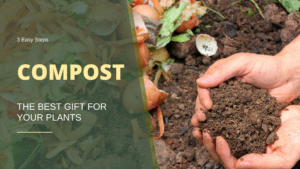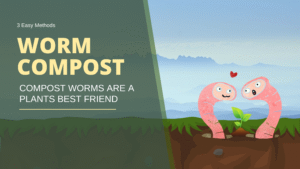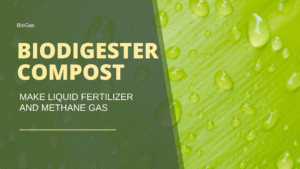How To Compost | Scientific Name: Poop
What is Compost? Compost is organic material, a key ingredient for healthy soil.
What is Composting? Composting is the process of breaking down large organic matter such as leaves, food waste, lawn & garden trimmings into fine rich soil material.
How does Composting Work? To give the short answer composting is an equal mixture of brown material (carbon) and green material (nitrogen) that gets decomposed by microorganisms, fungi, insects, worms etc.
Why Should You Compost? Compost enriches soil to promote healthy plant growth with increased resistance to disease and pests plus it helps to retain moisture and reduce landfill waste.
How to Get started Composting at Home
Composting is fairly simple process really however, it does take patience. To get started all you need is a place to make a pile, some green stuff, some brown stuff, and maybe a little water. Mix the green and brown material as you make the pile and then forget about it for a couple months. Congratulations you just made compost!
What is Considered Green and Brown Material?
Green material is what provides the very import nitrogen component and brown material is what provides carbon. Green material is things like fresh food scraps garden trimmings, fresh lawn trimmings etc. Brown material is things like dry leaves in the fall, wood trimmings, dried straw, and even paper products.
The short answer would be green is wet brown is dry.
Is There More Ways To Compost?
Yes and no, Vermicomposting is a method that utilizes concentration of specific types of worms to quickly break down specific materials. Ultimately the same process is going on just in a controlled and perhaps enhanced scenario which requires human input.
There is also a method known as a bio digester, another man made method that mimics a natural process in a specific way for streamlined results. The bio digester mimics the process of a grazing animals stomach much like a cows digestive process. The perk with this method is captured and usable methane gas production also recently coined biogas.
What Can you Compost?
This can vary slightly depending on the composting method, but playing it safe with items on the “don’t compost” list will not hurt you with any method. Although some of the items in the “Don’t Compost” category are compostable, it is best as a beginner to omit them from your compost to be safe.
Do Compost
- Fruits and Vegetables
- Eggshells
- Coffee Grounds and Tea Bags
- Paper products (although make your own call on treated ie. glued or inked products)
- Yard and Garden Trimmings
- Leaves, Wood chips, Straw, Hay etc.
- Cotton and Wool Fabric
- Hair and Fur
- Ashes
- Nut Shells
Be Cautious With
Although certainly compostable be careful not to throw off the balance of your compost by having heavy concentrations of theses items, especially with Vermicomposting. You don’t want to give your worms indigestion!
- Citrus
- Onions
- Garlic
- Extremely Hot Peppers
Don’t Compost
- Black Walnut
- Coal or charcoal ash(natural charcoal is ok but be careful with things like briquettes as they may have substances that are harmful for you and your plants)
- Dairy Products
- Diseased or Insect infested plants have potential to survive the and cause new infection
- Fats, oils, grease, lard etc.
- Meat or fish bones and scraps
- Pet wastes
- Anything treated with chemicals, including pesticides and weed killers.

How to Make a Compost Pile | Composting
This is the a very simple way to go, just a few easy steps and some time.
- Mix your Green waste and Brown waste in equal parts putting it down in layers
- Spray each layer down with water just enough to make things damp
- Cover with a dry layer of leaves, straw, cardboard or even a tarp
A well mixed pile should only need to be turned once to get the outer layer cooking after about the first month. A compost pile will produce heat, a lot of heat on the inner portion especially. Moderate size compost piles can even be a good heat source to keep your greenhouse warm in the winter.

How to Compost with Worms | Vermicomposting
There are a few common methods used when composting with worms.
- Stackable Worm Trays – There are custom made stackable trays which allow you to add food waste to the top tray and let the worms migrate upward as the bottom trays are finished being eaten.
- Worm Bin – Simple tried and true method add some paper to the bottom for bedding material top with food scraps and coco coir or peat moss and add a pile of worms
- Worm Bin Feeder Tubes – You can take a tube or pipe with a lid and drill a series of holes in the sides for the worms to travel in and out. Bury the tube in the garden with just the top lid exposed. Fill with food scraps and some worms to start. The worms will enter the tube to eat food scraps and the crawl out through the garden to poop and deliver the goodness to your plants.
For a how to guide video Check out How to make the compost worm feeder tubes

How to Make BioGas with a BioDigester | Biodigesting
- Set up a tank with an intake, vent tube and liquid transfer vent tube that connects to a second tank
- Input manure and water to start the digesters biology
- Connect a Gas collection and holding tank to the top gas vent tube
- Connect a drain valve to the second liquid collection tank
The liquid that comes out is your liquid fertilizer, and the gas is methane you could use to run your barbecue etc. Feed regularly with all your organic materials, ie food waste manure etc.
The Composter’s Toolkit
To help you create the fertile foundation for your garden, here are some essential tools and amendments.
- Soil Testing & Analysis:
- Professional Soil Test Kit – Get a detailed, accurate baseline of your soil’s health.
- Digital pH Meter – For quick and easy pH readings in your garden and compost.
- Essential Organic Amendments:
- Compost Worms (Red Wigglers) – The engines of a vermicompost bin, turning kitchen scraps into potent fertilizer.
- Worm Castings (Vermicompost) – A potent, microbe-rich superfood for your soil.
- Kelp Meal – Provides a broad spectrum of essential trace minerals.
- Compost Starter – An inoculant to help kickstart a new compost pile.
- Tools for Building, Not Breaking:
- Broadfork – The perfect tool for aerating soil deeply without destroying its structure.
- Compost Thermometer – To monitor the temperature of your “hot” compost pile.
- Garden Sifter Screen – For creating fine, beautiful compost for seed starting mixes.

